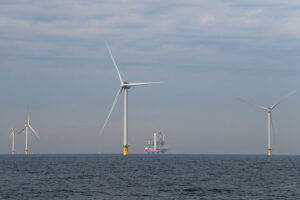THE UK is open to working closely with the Philippines in developing its offshore wind resources, noting the country’s many high-potential sites.
British Deputy Ambassador to the Philippines Alistair White said on the sidelines of a conference last week that “the Philippines is showing real ambition and understanding of the urgency of addressing climate change and moving to renewables… I think where the UK and the Philippines can work most closely is potentially UK expertise, particularly in offshore wind. You have a lot of islands, you have a lot of wind from offshore, and the UK has a lot of expertise,” he said, adding that solar is another potential area of cooperation.
Mr. White described the Philippines as a “young market” and “fast-growing economy.”
“There’s a clear need and appetite for foreign investment and partnerships, particularly in the energy sector. I think it’s seen as a very attractive, interesting market,” he said.
He said the UK recognizes the government’s work in minimizing red tape and make the investment climate more attractive.
Philippine offshore wind resource potential has been estimated at 178 gigawatts, according to the World Bank’s 2022 Offshore Wind Roadmap for the Philippines.
During the conference, Mr. White announced that the UK shut down its last coal-fired power station, the first among the Group of Seven (G-7) to do so.
“Just over 10 years ago, the UK still relied on coal for 40% of all of our energy needs, but today we have the largest fixed bottom offshore wind farm in the world and the world’s first floating wind farm. We’ve installed enough solar power to power over three and a half million homes,” Mr. White said.
“And today, the 30th of Sept. 2024, I’m delighted to be able to stand here and say that the UK’s very last coal-fired power station will cease operations,” he added.
Ratcliffe-on-Soar power station in Nottinghamshire shut down late last month ending the over 140-year history of coal power in the UK.
It had a generation capacity of 2,000 megawatts and was capable of producing electricity to power more than two million households, according to Uniper, which owned and operated the station.
Mr. White said that the UK has been committed to decreasing its fossil fuel generation since around 2008 and has been increasing the mix of renewable energy.
“Our trajectory is continuing the investment in renewable energy towards our net zero target in 2030,” he said at the sidelines.
Asked to comment, Jose M. Layug, Jr., former Energy undersecretary and president of the Developers of Renewable Energy for Advancement, Inc., said via Viber that the UK’s coal phaseout could serve as “a model for the Philippines’ own goal of energy transition: calibrated and responsive.”
Pedro H. Maniego, Jr., senior policy advisor of the Institute for Climate and Sustainable Cities, said that the Philippines has the third-lowest per capita power supply in ASEAN (Association of Southeast Asian Nations) and there needs to be reliable power to step in when it phases out its coal-fired power plants.
“We need reliable and sufficient power for continued economic growth and industrial development. There must be replacement plants for any retired power plants whether coal-fired or not,” he said in a Viber message.
Under the Philippine Energy Plan, the Department of Energy (DoE) plans to study the voluntary retirement and repurposing of coal-fired power plants to ensure a clean-energy transition.
The DoE has set a target of increasing the share of renewable energy in the power generation mix to 35% by 2030 and 50% by 2040. — Sheldeen Joy Talavera

